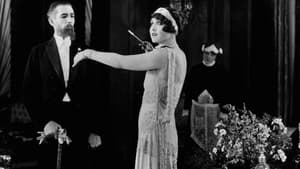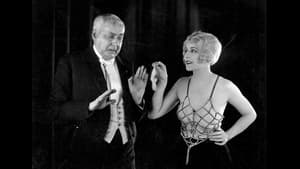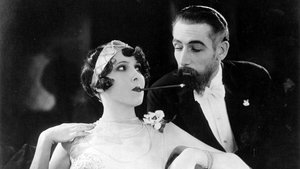Contact: [email protected]
Video Sources 0 Views
- Watch trailer
- The Pleasure Garden


Synopsis
Table of Contents
ToggleReview: The Pleasure Garden (1927) – A Vintage Masterpiece Restored to Colorful Life

Introduction
“The Pleasure Garden” (1927) stands as a testament to the enduring charm of silent cinema and the timeless allure of Hitchcock’s early works. In this article, we delve into the significance of this early film, exploring its restoration in vivid color and its enduring legacy in the world of cinema.
Check The Full Colorized Movies List
Check Our Colorized Movies Trailer Channel
Understanding The Pleasure Garden: Director, Cast, and Genre
Directed by the legendary Alfred Hitchcock, “The Pleasure Garden” (1927) marks the beginning of a storied career that would revolutionize the world of cinema. The film features a talented cast, including Virginia Valli and Carmelita Geraghty, whose performances bring to life the vibrant world of London’s theater scene. Blending elements of romance, drama, and suspense, “The Pleasure Garden” (1927) captivates audiences with its richly drawn characters and captivating storyline.
Exploring the World of The Pleasure Garden: Plot and Characters
Set against the backdrop of London’s bustling theater district, “The Pleasure Garden” (1927) follows the intertwining lives of two chorus girls, Patsy and Jill, whose fates become entangled in a web of love, betrayal, and tragedy. As they navigate the treacherous waters of show business, they encounter a cast of colorful characters, each with their own secrets and desires. Through its compelling narrative and dynamic characters, “The Pleasure Garden” (1927) offers a captivating glimpse into the world of 1920s London and the human condition.
The Art of Film Colorization
Film colorization has the power to breathe new life into classic movies, transforming them into vibrant works of art that resonate with modern audiences. By digitally restoring and colorizing black and white films, filmmakers can enhance the visual experience and introduce timeless stories to new generations of viewers. With “The Pleasure Garden” (1927), the restoration to color offers audiences a fresh perspective on Hitchcock’s early masterpiece, allowing them to experience the film in a whole new light.
Early Colored Films: A Brief History
The history of colored films dates back to the early days of cinema, with filmmakers experimenting with various techniques to add color to their creations. From hand-tinted frames to early Technicolor processes, the evolution of colored film has been marked by innovation and creativity. As technology has advanced, so too has the art of colorization, with modern techniques allowing for the restoration and enhancement of classic movies like “The Pleasure Garden” (1927) in ways never before possible.
The Pleasure Garden and Its Colorized Restoration
The decision to restore “The Pleasure Garden” (1927) to color was met with excitement and anticipation from fans of Hitchcock’s work. By breathing new life into this early masterpiece, filmmakers have reintroduced audiences to the magic of silent cinema in a whole new way. The colorized restoration of “The Pleasure Garden” (1927) offers viewers a fresh perspective on Hitchcock’s visual storytelling and allows them to experience the film’s richly detailed world in vivid color.
The Debate Over Film Colorization
The debate over film colorization is a contentious issue that continues to divide audiences and critics alike. While some argue that colorization enhances the viewing experience and introduces classic films to new generations of viewers, others maintain that it compromises the artistic integrity of the original work. With “The Pleasure Garden” (1927), the colorized restoration offers audiences the opportunity to experience Hitchcock’s early masterpiece in a whole new light, sparking renewed interest in silent cinema and its enduring legacy.
Examining The Pleasure Garden as a Colorized Film
As with any colorized classic, the impact of colorization on “The Pleasure Garden” (1927) is a matter of personal interpretation. Some may argue that it enhances the film’s visual appeal and immerses viewers in its world, while others may feel that it detracts from the stark beauty of the original black and white version. Regardless of one’s stance on the issue, there’s no denying the enduring power of “The Pleasure Garden” (1927) as a timeless masterpiece that continues to captivate audiences with its compelling storyline and innovative visual style.
Influence and Legacy: The Pleasure Garden’s Impact on Cinema
“The Pleasure Garden” (1927) holds a special place in the annals of cinema as Hitchcock’s debut feature film. While it may not have received the same level of acclaim as some of his later works, its influence on the world of cinema is undeniable. From its innovative storytelling to its dynamic characters, “The Pleasure Garden” (1927) paved the way for Hitchcock’s future successes and established him as a visionary filmmaker with a unique voice and style.
Director’s Cinematic Legacy: Beyond The Pleasure Garden
Alfred Hitchcock’s legacy extends far beyond “The Pleasure Garden” (1927), with a diverse body of work that continues to captivate audiences around the world. From “Psycho” to “Vertigo,” Hitchcock’s films are celebrated for their suspenseful storytelling, innovative camera techniques, and complex characters. Through his groundbreaking work, Hitchcock left an indelible mark on the world of cinema, inspiring generations of filmmakers to push the boundaries of storytelling and visual expression.
Themes Explored in The Pleasure Garden
“The Pleasure Garden” (1927) explores a myriad of themes, from the allure of the theater to the complexities of human relationships. Through its richly drawn characters and atmospheric storytelling, the film invites viewers to ponder the nature of love, ambition, and betrayal. As audiences immerse themselves in the world of “The Pleasure Garden” (1927), they are transported to a bygone era filled with intrigue, romance, and suspense.
Reception and Controversy Surrounding The Pleasure Garden
Upon its release, “The Pleasure Garden” (1927) received positive reviews from critics and audiences alike, with many praising its innovative storytelling and stunning visuals. However, the decision to release the film in a colorized format sparked debate among purists, reigniting the age-old discussion surrounding film preservation and artistic integrity. Despite the controversy, “The Pleasure Garden” (1927) remains a beloved classic that continues to captivate audiences with its timeless charm and evocative storytelling.
Where to Watch The Pleasure Garden Online
For those eager to experience the magic of “The Pleasure Garden” (1927), the film is readily available on popular streaming platforms such as Amazon Prime, iTunes, and Google Play. Whether you choose to watch it in its original black and white format or the newly restored colorized version, “The Pleasure Garden” (1927) promises to transport you to a world of intrigue and romance, where the line between fantasy and reality is blurred and anything is possible.
FAQs About The Pleasure Garden
Q: Is “The Pleasure Garden” (1927) based on a true story? A: No, “The Pleasure Garden” (1927) is a fictional tale crafted by Alfred Hitchcock, inspired by his experiences working in the theater and his observations of human nature.
Q: Who are the main actors in “The Pleasure Garden” (1927)? A: “The Pleasure Garden” (1927) features an ensemble cast led by Virginia Valli and Carmelita Geraghty, whose performances bring to life the vibrant world of London’s theater scene.
Q: What awards did “The Pleasure Garden” (1927) win? A: While “The Pleasure Garden” (1927) did not win any major awards, it received critical acclaim for its innovative storytelling and stunning visuals.
Q: Why was “The Pleasure Garden” (1927) released in a colorized format? A: The decision to release “The Pleasure Garden” (1927) in color was made to introduce the film to a new generation of viewers and enhance its visual appeal for modern audiences. While the choice to colorize the film sparked debate among purists, it ultimately allowed “The Pleasure Garden” (1927) to reach a wider audience and ensure its continued relevance in the annals of cinematic history.
Conclusion
“The Pleasure Garden” (1927) remains a timeless masterpiece that continues to captivate audiences with its innovative storytelling, stunning visuals, and compelling characters. Whether viewed in its original black and white format or the newly restored colorized version, the film offers a captivating glimpse into the world of 1920s London and the human condition. As we reflect on its enduring legacy, let us celebrate Hitchcock’s visionary storytelling and the timeless allure of silent cinema, which continues to inspire and enchant audiences around the world.













